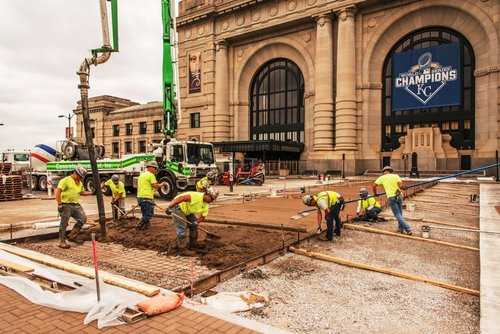
When the concrete is hotter than 77 degrees Fahrenheit, the process of hydration is sped up and generates internal heat. When cement hydrates it uses water and grows crystals around the aggregate particles. When it’s too hot, water can be lost through evaporation. This doesn’t allow the concrete to hydrate properly due to the lack of water present and can result in loss of strength. The main concern with working in hot weather isn’t just the air temperature, but the concrete’s temperature.
Pouring concrete in hot weather could present the following problems:
- Increased difficulty when finishing the concrete
- The formation of cold joints due to hot weather decreasing the setting time
- Reduced strength and durability
- Lower compression strength
- Additional drying shrinkage of the hardened concrete
- Increased risk of cracking
If the temperature of the concrete at the time of concrete placement will exceed 77 degrees Fahrenheit, a plan should be developed to negate the effects of high temperatures. Here are 9 tips for pouring concrete in hot weather:
- Have sufficient manpower to manage the concrete when it is being poured and for the finishing process — this is team effort .
- If possible, avoid pouring concrete at noon or during peak times for hot air temperature. Mornings are IDEAL.
- When pouring concrete in hot weather, space control joints at smaller intervals than cold weather concrete joints.
- If possible, keep an evaporative retarder ready on site in case the temperature gets hotter and water is rapidly evaporating.
- Use ice as part of the concrete water mix to cool the concrete.
- Reduce the mixing time once water has been added to the mix.
- Bags of concrete mix and all equipment needed to pour concrete in hot weather should remain covered or in the shade until the last moment before using. Keep equipment cool.
- When pouring concrete for a slab, first dampen the sub-grade. Take the hose from the concrete truck and mist the sub-grade. They might get angry but who cares.
- Use cool water to dampen side forms for slabs or walls.